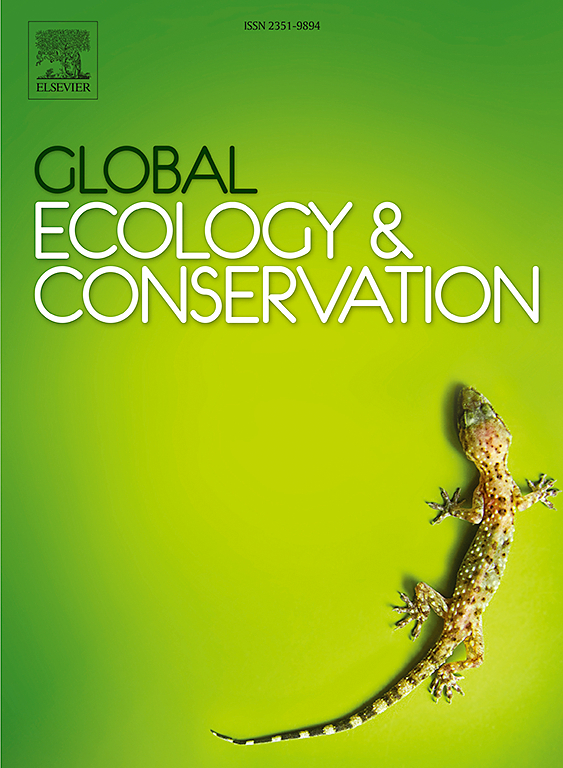利用环境DNA和CRISPR-Dx快速现场检测濒危和难以捉摸的物种
IF 3.5
2区 环境科学与生态学
Q1 BIODIVERSITY CONSERVATION
引用次数: 0
摘要
随着生物多样性侵蚀的加速,采用快速、可扩展的监测方法对物种保护至关重要。最近出现的一种强大的生物多样性监测方法是环境DNA (environmental DNA, eDNA)。目前,eDNA分析需要在设备齐全的实验室中进行冗长的程序,这减慢了分析速度,限制了广泛的应用。在这里,我们开发了一种eDNA分析方案,利用基于crispr的诊断系统(Dx)和横向流动测试来快速处理和分析eDNA样品。为了测试基于现场的方案的多功能性,我们设计了一种针对濒危和难以捉摸的非洲海牛(trichecchus senegalensis)的CRISPR-Dx检测方法。我们在刚果共和国的一个国家公园的十个地点取样,在几乎一半的地点直接检测到海牛的DNA。我们后来在一个设备齐全的实验室用高灵敏度方案证实了这些检测。CRISPR-Dx检测主要通过先前报道的定量PCR (qPCR)试验进行证实。尽管基于现场的协议灵敏度较低,但我们的分析表明,它的速度和应用的便利性比检测受威胁和难以捉摸的物种的较慢和更昂贵的方法提供了优势,特别是如果协议在未来得到改进。我们的方法将提高eDNA分析的可及性和速度,加强生物多样性监测工作和物种保护举措。本文章由计算机程序翻译,如有差异,请以英文原文为准。
Rapid field-based detection of a threatened and elusive species with environmental DNA and CRISPR-Dx
With accelerating biodiversity erosion, it is critical for species conservation to use rapid and scalable monitoring methods. One powerful biodiversity monitoring method that has emerged recently is environmental DNA (eDNA). eDNA analyses currently require lengthy protocols in well-equipped laboratories, slowing down the analyses and limiting applications across broad scales. Here, we developed a protocol for eDNA analyses, leveraging CRISPR-based diagnostic systems (Dx) with lateral flow tests to rapidly process and analyze eDNA samples on site. To test the versatility of the field-based protocol, we designed a CRISPR-Dx assay specific to the threatened and elusive African manatee (Trichechus senegalensis). We sampled water across ten locations in a national park in the Republic of Congo and detected manatee DNA directly on site in almost half of the sites. We later confirmed these detections with a high-sensitivity protocol in a well-equipped laboratory. The CRISPR-Dx detections were mainly confirmed with a previously reported quantitative PCR (qPCR) assay. Despite the lower sensitivity of the field-based protocol, our analysis shows that its speed and ease of application provide advantages over slower and more expensive methods to detect threatened and elusive species, in particular if the protocol is improved in the future. Our methodology will increase the accessibility to and speed of eDNA analyses, enhancing biodiversity monitoring efforts and species conservation initiatives.
求助全文
通过发布文献求助,成功后即可免费获取论文全文。
去求助
来源期刊

Global Ecology and Conservation
Agricultural and Biological Sciences-Ecology, Evolution, Behavior and Systematics
CiteScore
8.10
自引率
5.00%
发文量
346
审稿时长
83 days
期刊介绍:
Global Ecology and Conservation is a peer-reviewed, open-access journal covering all sub-disciplines of ecological and conservation science: from theory to practice, from molecules to ecosystems, from regional to global. The fields covered include: organismal, population, community, and ecosystem ecology; physiological, evolutionary, and behavioral ecology; and conservation science.
 求助内容:
求助内容: 应助结果提醒方式:
应助结果提醒方式:


